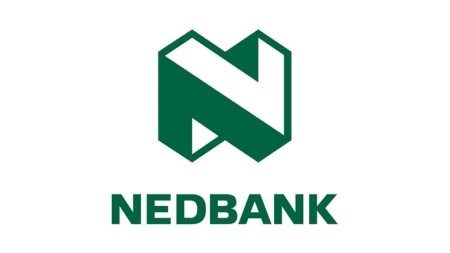John Loos, FNB Property Strategist, takes a perspective on property booms in the more rural regions.
The Platteland has experienced a major property boom along with the rest of
the country. This is largely because it also experienced a massive reduction in
borrowing rates just the same as the rest of the country, and the interest rate
adjustment since 1998 has arguably been the most important driver of the
country's housing boom. But the Platteland market has not by-and-large gone
crazy, or become irrational. It is still significantly cheaper than the major
urban markets, reflecting weaker household buying power. During the boom period
from 1999 to 2005 the smaller provinces surrounding Gauteng actually lost ground
to the country's economic powerhouse, both in terms of their economies as well
as in terms of average house prices.
Platteland towns nearer to the metros have got a lot going for them - being able
to capitalise on economic activity flowing out from the metros as they "burst at
the seams", cashing in on some urban commuters, as well as the growing metro
"getaway" market. Gauteng mining towns are also benefiting from a commodities
boom and Eskom is expanding electricity generation capacity around some
Platteland towns.
But there is another Platteland property market. Platteland towns farther off
the beaten track, unable to capitalise on tourism, mining or commuters, will
continue to battle as the urbanisation process moves ahead, and their fortunes
rest on a slow growth and volatile agriculture sector.
For many years, urbanisation in South Africa has been a reality, implying a
certain degree of "depopulating" (ontvolking van die Platteland) of the more
rural areas, or "Platteland" as it is often called. Many of the Platteland
economies have been battling, as much of the new economic activity in SA
centralises around major metros. Agriculture, the mainstay of many Platteland
towns, has not been a rapid long term growth sector, while former major railway
junction towns such as De Aar and Noupoort, hives of activity in days gone by,
have suffered greatly as Spoornet has steadily streamlined its operations.
How, then, do many such towns also manage to experience significant residential
property booms. Has the Platteland gone crazy? Has the demise of the Platteland
reversed the trend? "Not necessarily" is the answer to both of these questions.
UNDERSTANDING THE MAIN DRIVERS OF THE NATIONAL PROPERTY BOOM - 1998 to 2005
Firstly, understanding the drivers of the national property boom are key to
understanding why even some of the poorest performing Platteland regions have
experienced massive residential property booms themselves. The foremost driver
of the national property boom, which took place from around 1999 to 2005, was a
major interest rate reduction, and the Platteland experiences exactly the same
interest rate trends as the major metros.
Let's unpack what is arguably the most important index of housing affordability,
i.e. the index measuring the trend in the ratio of repayment value on the
average priced house/average household income. I claim it to be the most
important index, as opposed to the average house price/average household income
ratio because for a huge number of people mortgage debt is the way houses are
purchased.
In 2005, the average value of this index was 15% higher than the average value
in 1998, indicating deterioration in this measure of affordability. 15% is a
fairly modest rise, given that the average house price (according to Absa) was
218% higher in 2005 than in 1998.
How was it possible to contain the deterioration in affordability to such a
modest magnitude? Arguably the single-most important factor was the massive
decline in interest rates. From an average rate of 20.5% in 1998, the average
mortgage rate declined to 10.63% in 2005. Given that total supply of overall
housing stock couldn't adjust rapidly, the surge in housing demand due to the
greater affordability caused by interest rate reduction largely translated into
price inflation.
In an attempt to isolate the direct interest rate effect over those years, I ask
by how much could house prices have risen from 1998 to 2005 without the index
rising above 100, and assuming that per household income growth was 0% over the
period? The answer is 71.3%. What accounted for the remainder of the 218%
increase? Total nominal per household income was 61.4% higher in 2005 than in
- How much could the average house price rise without the affordability
index exceeding 100 in 2005, given the actual combination of growth in per
household income and interest rate reduction? The answer is 176.5%, which means
that the growth in per household income of 61.4% over the period accounted for a
further 105.2 percentage point's worth of house price growth assuming an
unchanged affordability index.
Of the 105.2 percentage points accounted for by nominal per household income
growth, I estimate over half the amount to be due merely to inflation as opposed
to real income growth. Furthermore, a significant chunk of real disposable
income growth over the period was due to interest rate cuts and the stimulus
that they provided for the economy and thus income growth.
In short, a major chunk of house price inflation during the boom years was
driven by interest rate cuts, via their direct and indirect effects, along with
inflation. Admittedly, by 2005 the affordability index had risen above the 1998
level of 100 to 115, due to house prices rising by more than the "allowed"
176.5%, with the 2005 average house price being 218% higher than the average in
The additional drivers were probably sentiment-related. While the beginning of
interest rate reduction post-1998 was arguably the catalyst for a strengthening
market, many property investors move in merely because of the recent improvement
in the property market, thereby enhancing the trend. Some of these people would
be called speculators. The sentiment effect, along with some other factors such
as land shortages around urban areas probably accounted for the cumulative
deterioration in the affordability index to above the level of 100.
EXPLAINING THE PLATTELAND
I take the Free State excluding Bloemfontein for my Platteland example. The
average house price for this region in 2005 was 160.4% higher than in 1998
according to Absa figures. This is well lower than the national average growth
of 218% over the period, and far worse than the star performing province,
Gauteng, with 239.2%.
The poorer house price inflation is probably largely explained by far lower real
economic growth. Whereas neighbouring Gauteng averaged real GDP growth of around
4.9% per annum from 1999 to 2005 according to Globalinsight data, the Free State
excluding Bloemfontein averaged a mere 0.4% per annum. Even including
Bloemfontein, the total provincial growth rate was only slightly better at 1.1%
per annum.
Nevertheless, 160.4% house price inflation is significant by anybody's
standards. Has the Free State Platteland gone crazy? Hardly. Despite very low
economic growth, and thus real income growth, the combination of inflation and
real growth saw to it that nominal income per household in 2005 was 36.8% higher
than in 1998, while the region faced exactly the same interest rate trend as the
rest of the country.
Given the combination of interest rates, the rise in nominal per household
income, and cumulative house price inflation of 160.4%, the affordability index
for the Free State excluding Bloemfontein only rose above 100 (the 1998 level)
in 2005, 11% higher than 1998 and reflecting an overall deterioration in
affordability that was less than the national average.
Cumulative house price inflation of up to 134.5% from 1998 to 2005 could have
taken place without the housing affordability index rising above 100. In other
words, had the cumulative house price inflation rate been 134.5% over the 7 year
boom period, the above measure of housing affordability would not have
deteriorated in the Free State Platteland region, due to the combination of per
household income growth and interest rate reduction.
Cumulative house price inflation rates of 177.3% for Limpopo, 189.6% in
Mpumalanga, or 191.9% for Northwest would thus not seem too inappropriate. These
rates are lower than Gauteng, and so they should be, given their lower average
economic growth rates than the country's economic powerhouse.
Therefore, although housing markets and economies across the country benefited
greatly from a massive downward adjustment in interest rates, and they all
experience similar inflation (general inflation, not house price inflation)
rates, the Platteland regions have not been on some crazy, irrational path. The
smaller and largely Platteland provinces surrounding Gauteng lag the country's
largest provincial economy and housing market in every way.
During the housing boom years, Gauteng showed far superior cumulative house
price inflation of 235.2%.
Superior house price inflation saw Gauteng open up an even larger average house
price lead on the surrounding provinces.
To a large extent the superior Gauteng house price inflation is a reflection of
far superior average real economic growth of 4.9% per annum from 1999 to 2005.
Gauteng also has far higher average per household income of R142,393.
On the whole, therefore, the Platteland has not gone crazy. It has experienced a
house price boom along with the rest of the country largely on the back of the
direct effect of interest rate reduction since 1998, as well as the indirect
impact of the interest rate stimulus on real economic growth and thus income
growth. However, economic and house price growth-wise, the Platteland provinces
surrounding the Gauteng province have fared poorer than the country's major
metropolitan province, are significantly poorer, and have significantly cheaper
housing markets on average as a result.
A PART OF THE PLATTELAND HAS A LOT GOING FOR IT
Housing trends in future will reflect a "tale of 2 Plattelands", with mineral
rich Platteland areas and those nearer to the large metros faring far better
than the far-flung towns.
As the large metros grow, some of the Platteland areas will gradually be partly
or fully "absorbed" by the metros. Areas northwest of Tshwane such as Brits and
Hartebeespoort Dam may be good examples. As Gauteng runs out of space, and as
the existing space becomes pricier in this metro, so industrial and commercial
activity looks for new places to happen. This will benefit the likes of Brits as
well as other surrounding towns, ultimately perhaps even as far afield as
Witbank and Middelburg to the east and Potchefstroom/Klerksdorp to the west, in
years to come.
Surrounding towns' property markets also benefit from increased "dormitory" town
status. We have seen this in the case of Hartebeespoort Dam, and there has been
some anecdotal evidence of people commuting from as far as Potchefstroom. While
many people will look to move closer to the main centres such as Sandton or
Joburg CBD due to increasing traffic congestion, technology makes it possible
for some to move further out of the metros, and to cut their number of weekly
commuting trips to the metros.
"Getaway" trends may also benefit the Platteland even more in future. Corporate
South Africa is following global trends, being increasingly exposed to global
competition since the end of the isolation years. As corporate life for many
professional people becomes more competitive, working hours become longer, and
long holidays become more difficult to take. Many individuals, therefore, either
prefer or are forced into taking a greater number of shorter duration holidays.
This increases the need for "getaway" places nearer to the large metros.
The demand for nearby getaway destinations is further enhanced by the
increasingly congested and stressed urban lifestyles, not only in Gauteng, but
also in Cape Town and Durban. Not surprisingly, therefore, small towns near Cape
Town such as Greyton and McGregor thrive, as does the Natal Midlands and Central
Drakensberg, while previously-quiet towns such as Clarens in the Free State and
Dullstroom in Mpumalanga have become real hotspots. Expect more such towns to
rise in prominence in future.
The "getaway" destination demand is further enhanced by the accelerating long
term growth rates in the metros, which is driving more rapid growth in the
country's middle class.
Finally, let's not forget the need for greater power generation, supporting
greater economic activity on the Mpumalanga Highveld as well as near the new
coalfields in the Waterberg (Limpopo), or the general commodity boom which is
benefiting much of the region formerly known as the Transvaal. Towns near to
coal reserves, for example Ellisras, are set to benefit, while Rustenburg which
lies in platinum country has been benefiting for some time.
Many Platteland areas that can benefit from tourism or commodities or nearby
metro urban expansion have a lot going for them.
However, there are more far-flung areas battling to benefit from any of the
above. I think of the former railway junction towns of De Aar and Noupoort as
examples. These two towns were once hives of activity in the heyday of the
railways, but have suffered severe setbacks as Spoornet has cut back activity
dramatically in these areas. They are many miles from the major metros and are
off the large road routes. Their estimated average annual real economic growth
rates over the property boom years were not far above 1%. This is the other
Platteland. It benefited from the interest rate adjustment of the boom years as
did everyone to a greater or lesser extent, and probably had a considerable
property price boom by its own standards. But relative to the rest of the
country, such areas' economies and property markets will probably struggle.
All-in-all, therefore, while prices in some Platteland areas may seem crazy, its
residential market has by and large not "lost its marbles", and on average still
lags the major economic regions considerably.



